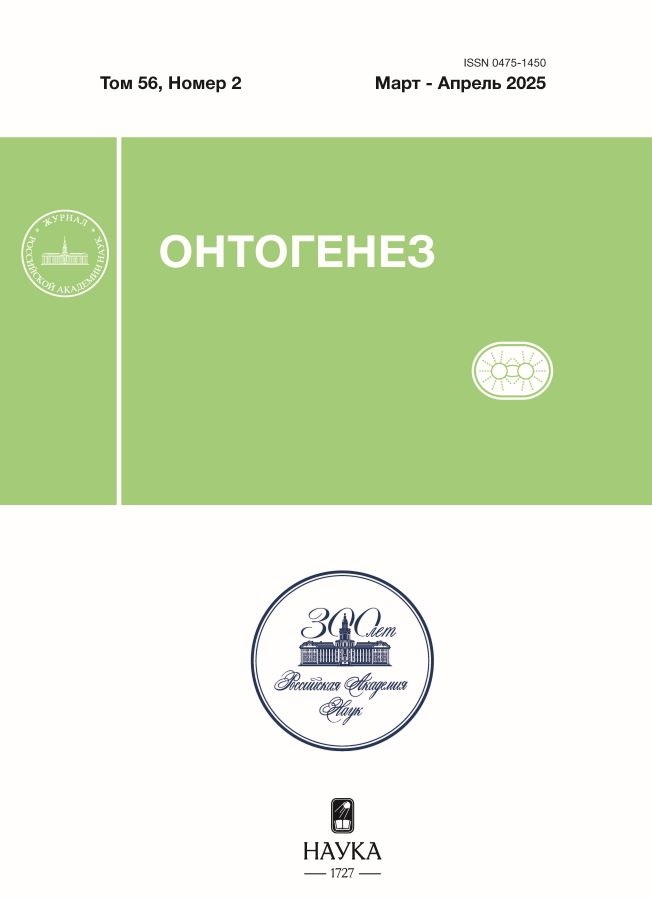Possibility of human embryo genome editing continues to be debated
- Autores: Sharov K.S.1
-
Afiliações:
- Koltzov Institute of Developmental Biology of the Russian Academy of Sciences
- Edição: Volume 56, Nº 2 (2025)
- Páginas: 86-92
- Seção: ТОЧКА ЗРЕНИЯ
- URL: https://medjrf.com/0475-1450/article/view/685714
- DOI: https://doi.org/10.31857/S0475145025020021
- EDN: https://elibrary.ru/KLARLS
- ID: 685714
Citar
Texto integral
Resumo
In 2021, the International Society for Stem Cell Research (ISSCR) cancelled the famous “Rule of 14 days” that has been regulating research on human embryos. This led to the emergence of novel controversial problems in bioethics, which are related to prospects of human genome editing in embryo. Theoretically, one can treat more than ten thousand inherited diseases with the use of gene editing techniques. Practically, these techniques have already been applied for treating a number of adults’ diseases. However, therapy based on gene editing technologies did not always lead to positive effects. Moreover, one may ask, whether these techniques can be used for gene editing of human embryos and gametes so that healthy children would be born that would have hereditary diseases otherwise. In this brief communication, we consider arguments “in favour” and “against”. We conclude that risks overweigh the potential good at this stage of gene editing techniques development.
Palavras-chave
Texto integral
Sobre autores
K. Sharov
Koltzov Institute of Developmental Biology of the Russian Academy of Sciences
Autor responsável pela correspondência
Email: const@idb-ras.ru
Rússia, Moscow
Bibliografia
- Anzalone A.V., Gao X.D., Podracky C.J. et al. Programmable deletion, replacement, integration and inversion of large DNA sequences with twin prime editing // Nat Biotechnol. 2022. V. 40. P. 731–740. https://doi.org/10.1038/s41587-021-01133-w
- Arjmand B., Larijani B., Hosseini M.S. et al. The horizon of gene therapy in modern medicine: advances and challenges // Adv. Exp. Med. Biol. 2020. V. 1247. P. 33–64. https://doi.org/10.1007/5584_2019_463
- Balon K., Sheriff A., Jacków J. et al. Targeting cancer with CRISPR/Cas9-based therapy // Int. J. Mol. Sci. 2022. V. 23. Art. 573. https://doi.org/10.3390/ijms23010573
- Birney E. A society-wide conversation is needed about germline genome editing using CRISPR // Nat. Med. 2024. V. 30. P 30–32. https://doi.org/10.1038/s41591-023-02681-1
- De Graeff N., De Proost L., Munsie M. ‘Ceci n’est pas un embryon?’ The ethics of human embryo model research // Nat. Methods. 2023. V. 20. P. 1863–1867. https://doi.org/10.1038/s41592-023-02066-9
- Doudna J.A., Charpentier E. Genome editing. The new frontier of genome engineering with CRISPR-Cas9 // Science. 2014. V. 346 (6213). Art. 1258096. https://doi.org/10.1126/science.1258096
- Doudna J.A., Sternberg S.H. A Crack in Creation: Gene Editing and the Unthinkable Power to Control Evolution. San Francisco: Mariner, 2017.
- FDA (Federal Drug Association). Casgevy approval. 2024. URL: https://www.fda.gov/vaccines-blood-biologics/casgevy Foreman A.L., Liddell K., Franklin S. et al. Human embryo models: the importance of national policy and governance review // Curr. Op. Genetics Develop. 2023. V. 82. Art. 102103. https://doi.org/10.1016/j.gde.2023.102103
- Goguen R.P., Chen M.J., Dunkley O.R.S. Gene therapy to cure HIV infection // Virologie (Montrouge). 2023. V. 27. P. 63–84. https://doi.org/10.1684/vir.2023.1024
- Grebenshchikova E.G., Andreyuk D.S., Vasiliev A.V. et al. Russia’s stance on gene-edited humans // Nature. 2019. V. 575. P. 596. http://dx.doi.org/10.1038/d41586-019-03617-x
- Griciuc A., Federico A. N., Natasan J. et al. Gene therapy for Alzheimer’s disease targeting CD33 reduces amyloid beta accumulation and neuroinflammation // Hum. Mol. Genet. 2020. V. 29. P. 2920–2935. https://doi.org/10.1093/hmg/ddaa179
- Guo C., Ma X., Gao F. et al. Off-target effects in CRISPR/Cas9 gene editing // Front. Bioeng. Biotechnol. 2023. V. 11. Art. 1143157. https://doi.org/10.3389/fbioe.2023.1143157
- Harari Y.N. Homo deus: A Brief History of Tomorrow. New York: Penguin, 2017.
- Hsu P.D., Scott D.A., Weinstein J.A. et al. DNA targeting specificity of RNA-guided Cas9 nucleases // Nat. biotechnol. 2013. V. 31. P. 827–832. https://doi.org/10.1038/nbt.2647
- Huxley A. Brave New World. London: Nobel, 2024.
- ISSCR Guidelines. ISSCR Guidelines for Stem Cell Research and Clinical Translation. https://www.isscr.org/docs/default-source/all-isscr-guidelines/2021-guidelines/isscr-guidelines-for-stem-cell-research-and-clinical-translation-2021.pdf?sfvrsn=979d58b1_4
- Kim A., Lalonde K., Truesdell A. et al. New avenues for the treatment of Huntington’s disease // Int. J. Mol. Sci. 2021. V. 22. Art. 8363. https://doi.org/10.3390/ijms22168363
- Kondkar A.A., Abu-Amero K.K. Leber congenital amaurosis: Current genetic basis, scope for genetic testing and personalized medicine. Exp Eye Res. 2019. V. 189. Art. 107834. https://doi.org/10.1016/j.exer.2019.107834
- Ledford H. CRISPR gene editing in human embryos wreaks chromosomal mayhem // Nature. 2020. V. 583. P. 17–18.
- Liu G., Lin Q., Jin S. et al. The CRISPR-Cas toolbox and gene editing technologies // Molecular Cell. 2022. V. 82. № 2. P. 333–347. https://doi.org/10.1016/j.molcel.2021.12.002
- Matthews K.R.W., Iltis A.S., Marquez N.G. et al. Rethinking human embryo research policies // Hastings Center Rep. 2021. 2021. V. 51. P. 47–51. https://doi.org/10.1002/hast.1215
- Pierce E.A., Aleman T.S., Jayasundera K.T. et al. Gene editing for CEP290-associated retinal degeneration // New Engl. J. Med. 2024. V. 390. P. 1972–1984. https://doi.org/10.1056/NEJMoa2309915
- Rivron N.C., Arias A.M., Pera M.F. et al. An ethical framework for human embryology with embryo models // Cell. 2023. V. 186. P. 3548–3557. https://doi.org/10.1016/j.cell.2023.07.028
- Sassin W., Donskikh O., Gnes A. et al. Evolutionary environments. Homo sapiens — an endangered species? Innsbruck: Studia Universitätsverlag, 2018.
- Scholefield J., Harrison P.T. Prime editing–an update on the field // Gene Therapy. 2021. V. 28. P. 396–401. https://doi.org/10.1038/s41434-021-00263-9
- Statement from the Organising Committee of the Third International Summit on Human Genome Editing, Royal Society. https://royalsociety.org/news/2023/03/statement-third-international-summit-human-genome-editing
- Subbaraman N. Limit on lab-grown human embryos dropped by stem-cell body // Nature. 2021. V. 594. P. 18–19. https://doi.org/10.1038/d41586-021-01423-y
- Thompson A.A., Walters M.C., Kwiatkowski J. et al. Gene therapy in patients with transfusion-dependent β-thalassemia // New Engl. J. Med. 2018. V. 378. P. 1479–1493. https://doi.org/10.1056/NEJMoa1705342
- Warnock M. Report of the committee of inquiry into human ertilization and embryology. London: Her Majesty’s Stationery Office, 1984. http://www.hfea.gov.uk/docs/Warnock_Report_of_the_Committee_of_Inquiry_into_Human_Fertilisation_and_ Embryology_1984.pdf
- Zhao Z., Shang P., Mohanraju P. et al. Prime editing: advances and therapeutic applications // Trends Biotechnol. 2023. V. 41. P. 1000–1012.
Arquivos suplementares










